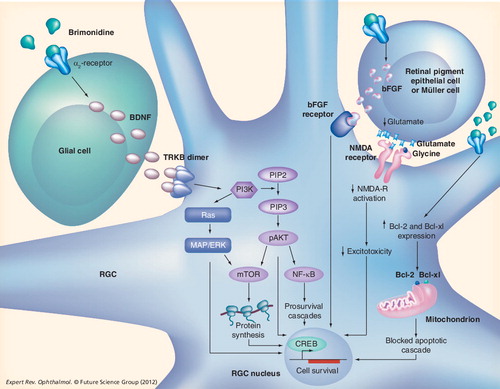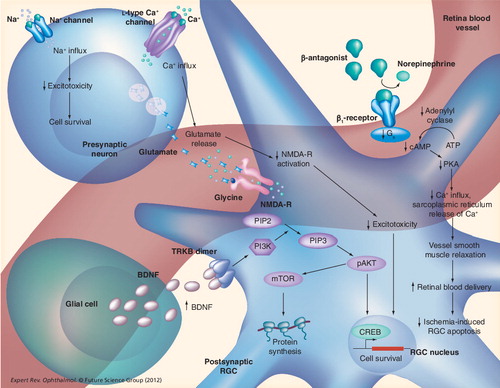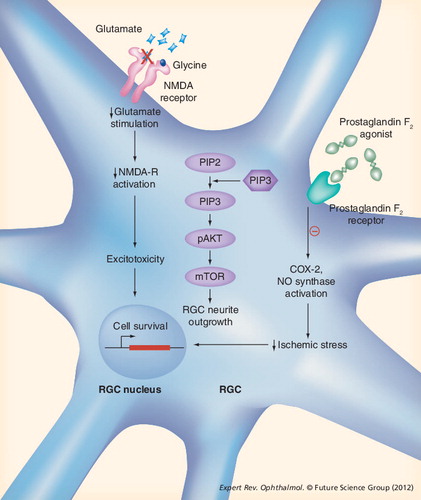Figures & data
α2-agonists such as brimonidine initiate multiple possible protective cascades. Direct binding of the α2-receptor on RGCs could promote Bcl-mediated anti-apoptotic cascades, while binding to receptors expressed by glial or pigment epithelial cells could induce trophic signaling involving BDNF and bFGF, and their respective receptors.
bFGF: Basic FGF; NMDA-R: NMDA receptor; RGC: Retinal ganglion cell.

Based on known expression patterns, β-receptor antagonists could bind channels in presynaptic circuits to reduce the release of glutamate and postsynaptic activation of NMDA receptors on RGCs. Antagonists could also exert influence on receptors expressed by vascular elements, leading to increased blood supply and reduced ischemia-related stress. Finally, certain β-receptor antagonists upregulate expression of BDNF in retinal glia.
NMDA-R: NMDA receptor; RGC: Retinal ganglion cell; TRKB: Tyrosine receptor kinase B.

Evidence suggests a role for prostaglandin agonists in reducing excitotoxic stress. Direct binding of prostaglandin receptors on RGCs could reduce COX-2-mediated induction of nitric oxide synthase.
NMDA-R: NMDA receptor; RGC: Retinal ganglion cell.

In many neurodegenerative conditions, excessive glutamate release from presynaptic terminals binds to postsynaptic NMDA-Rs, depolarizing the postsynaptic membrane through removal of the Mg2+ block. Subsequent influx and build-up of excess calcium leads to excitotoxicity and neuronal apoptosis.
NMDA-R: NMDA receptor.
